Technical Information
General technical elements of the guitars. The captions provide basic information. Please contact me for complete information regarding the proper care and handling of your instrument.
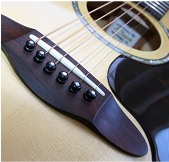
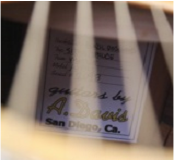
You can find the label glued to the heel block, inside the body of your A.Davis guitar. It lists the tonewoods, binding material [trim], model and serial numbers, and the date of completion.
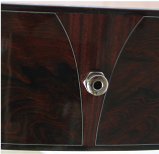
Endpin preamp installed in a Brazilian J1. This one is a Highlander. The Highlander is unique in the way it uses wood screw threads on the preamp. The hole has to be carefully drilled and chamfered, then tapped with a special tool for proper fitment.
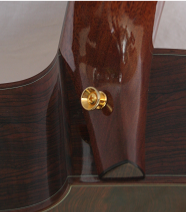
Many guitar companies recommend this position for strap pins. Our measurements are; 2" down from fingerboard to neck joint, centered between the neck to body joint and the crease at the back of the heel. Try to get it perpendicular to the contour of the heel at the point where you mark the hole. Make sure the drill bit safely exceeds the diameter of the shaft on the screw while giving the threads something to bite into. I recommend that you call me for options before you do this to an A.Davis guitar.
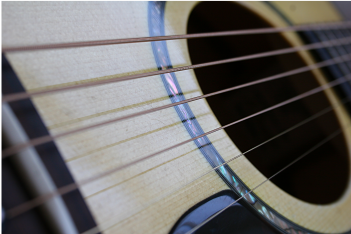
The performance of your A.Davis guitar can vary greatly with a different set of strings. Materials for the core and windings are well known sound enhancers. The size of the core vs. the windings is also an important factor in playability and sound. What many people don't know is: The core and winding tension can both be controlled during manufacturing. A set of strings or a string in a set can act quite differently when the package labels describe similar sets of strings.
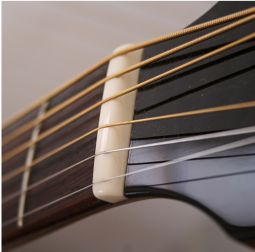
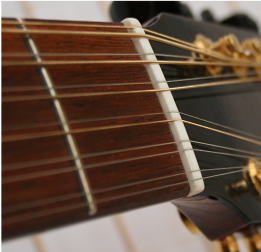
The nut is a very important part of the guitar. It has to provide a stable anchor against vibration while allowing the strings to slip freely during tuning and playing. The nut position in to the frets, string height and peghead angle all have an important role in sound, intonation, and playability. On a twelve string, the string heights can be measured from the bottom, center, or top of the strings to achieve a number of effects.
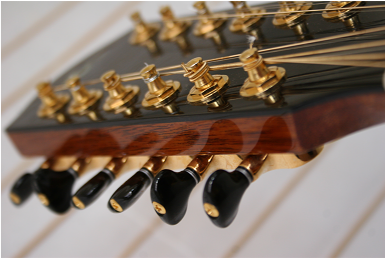
A twelve string peghead with a nice string-up job. Look closely at the 11th string where it is "hog-tied" and wound onto the post. The string is anchored at the bridge and then slipped through the tuner post. The loose end is kinked as you wrap it around the post towards the center of the peghead [the same direction the strings will wind around the tuner post], and underneath the string, and then pulled up as you pull tension on the string. Keep tension on the string near the tuner shaft as you wind.
You can get about 3" of slack by straightening your index finger and pointing [touching] at the 12th fret while the strings are being held away from the fretboard by your last three fingers. If you hog-tie 'em you'll need only one or two winds on the bass strings and two or three on the trebles - and they won't slip! This works good for nylon strings too but you need about three or four winds.
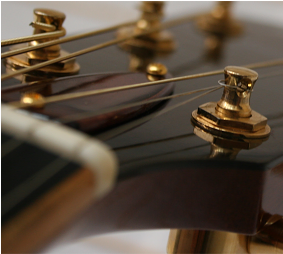
This is not the way to put strings on. The figure 8 winding on the first string won't hold much better than a simple kink and there aren't enough windings around the post. This string will loosen or break and leave a difficult job to remove it. A special tool will be needed and blood loss or damage to the guitar is a good possibility.
The photo also shows the location of the truss rod cover. I don't use adjustable truss rods, anymore. Now I use a high modulus graphite truss system and pre-tension the neck while doing the fretwork.
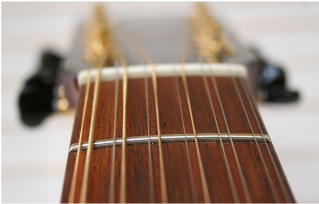
A photo of a fret. There are a lot of different types and a lot of different ways to install and shape them. I've tapped in, filed, sanded and polished over 150,000 of them.
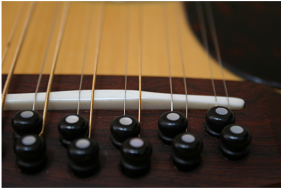
The location of the saddle is important and not just for intonation. Sound and playability are more than subtly affected by what goes on in this area. A nicely polished bone saddle with individual string compensation is like the cherry on a sundae. I use a gentle contour that can be easily maintained throughout the life of the guitar.
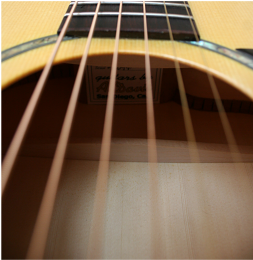
I don't use center strips or decoration on the back [center joint] of my guitars. I have noticed through the years that they add weight to the instrument; they rarely keep a guitar from cracking and they make the guitar harder to repair.